Yes, Electric Big Rigs Are Coming—and We Drive Four of Them
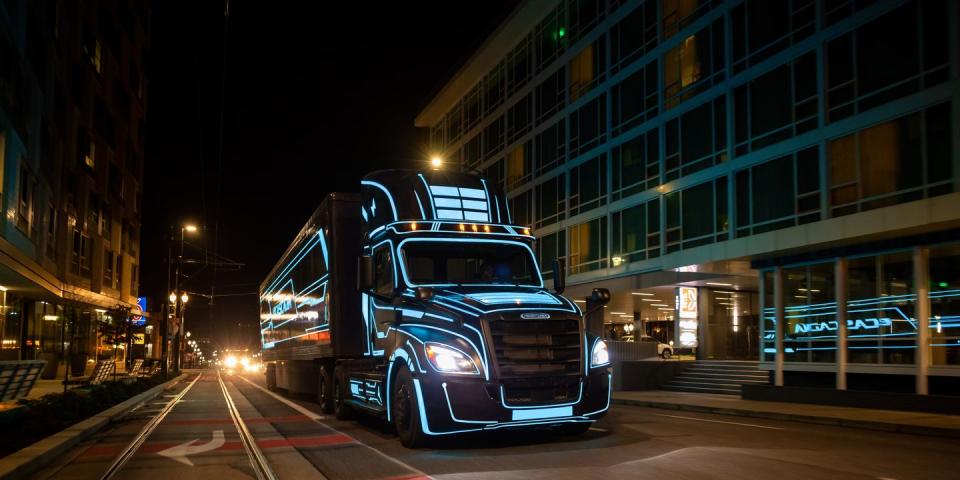
Electric semi-trucks are coming to roads near you—eventually.
They are clean, green, and very expensive machines, though they will pay off after several years
As with every class of EV rolling out or in development, one of the biggest obstacles to adoption is the lack of charging infrastructure—particularly acute when talking about big rigs.
Electric cars now make up about two percent of sales and growing. Electric trucks are a little slower to adapt but are nonetheless plowing ahead in their adoption by the market. Big truck makers MAN and Scania have started pouring almost $2 billion into electric truck R&D. Volvo has a fleet of 70 electric big rigs operating in Southern California. Tesla may or may not start cranking out a few trucks at its own factory once it figures out where to get enough batteries for them. And Daimler subsidiary Freightliner has a demo fleet of electric trucks 40 strong, and will introduce commercially available models in numerous classes next year.
So is the trucking industry switching to electric? Eventually.
“The pandemic delayed introduction of electric trucks, creating delays in development and testing,” said Don Ake, vice president of commercial vehicles for Freight Transportation Research. “But it appears there will be some limited production in 2021. There is increased competition between the large OEMs and several new players, so there is a race to get the products to market quickly.”
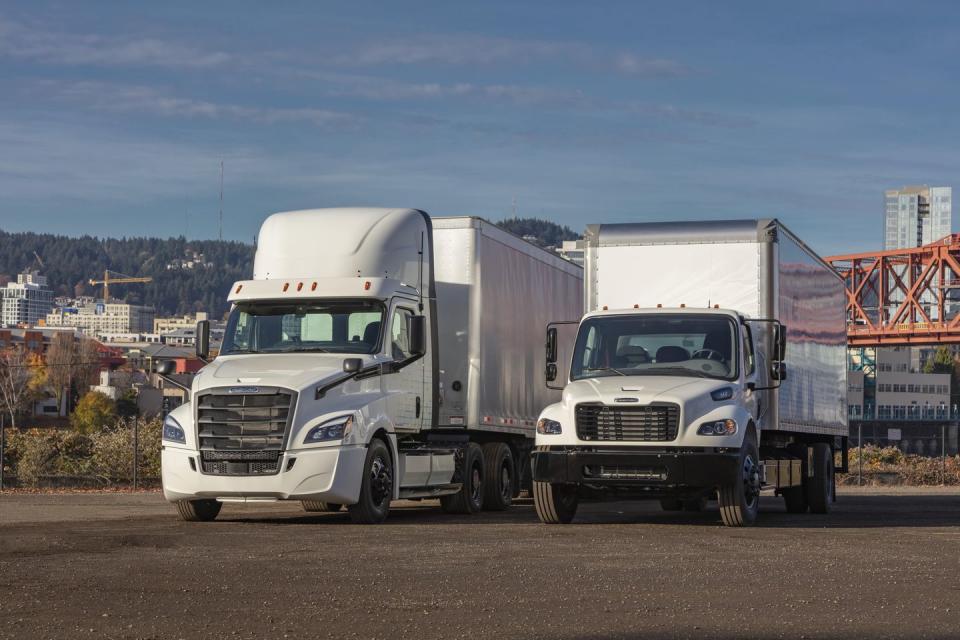
Medium-sized electric trucks may get here first.
“We see that electrification adoption is accelerating across commercial vehicles starting with the light commercial vehicles and buses and continuing with the medium-duty trucks because they are reaching Total Cost of Ownership parity with internal combustion engines pretty much today,” said Beyza Sarioglu, senior director of strategy and business planning for commerical vehicles at Dana. “Especially in urban and regional use cases such as distribution of goods and local services like construction because they require smaller batteries and with their duty cycles they get more benefit from regenerative braking, and different technologies electrification offers. Long-haul, on the other hand, heavy-duty trucks are expected to reach TCO (Total Cost of Ownership) parity in the 2030 timeframe. It’s not going to be a quick transition.”
“We have the technology today to make medium-duty trucks work for short-local runs,” said Ricardo Rodriguez-Long, who works in asset management for US 395 Motors and spent 30 years in heavy-duty truck dealer management. “Regarding 26,000 pounds or more, EV trucks face a lot of obstacles due to the use of power (energy consumed) and the need for bigger payload.”
Several of Freightliner’s fleet of 40 electric trucks are on a demo tour of the country as you read this. We caught up with the tour and drove four of the trucks to see how viable electric heavy-duty trucks are.
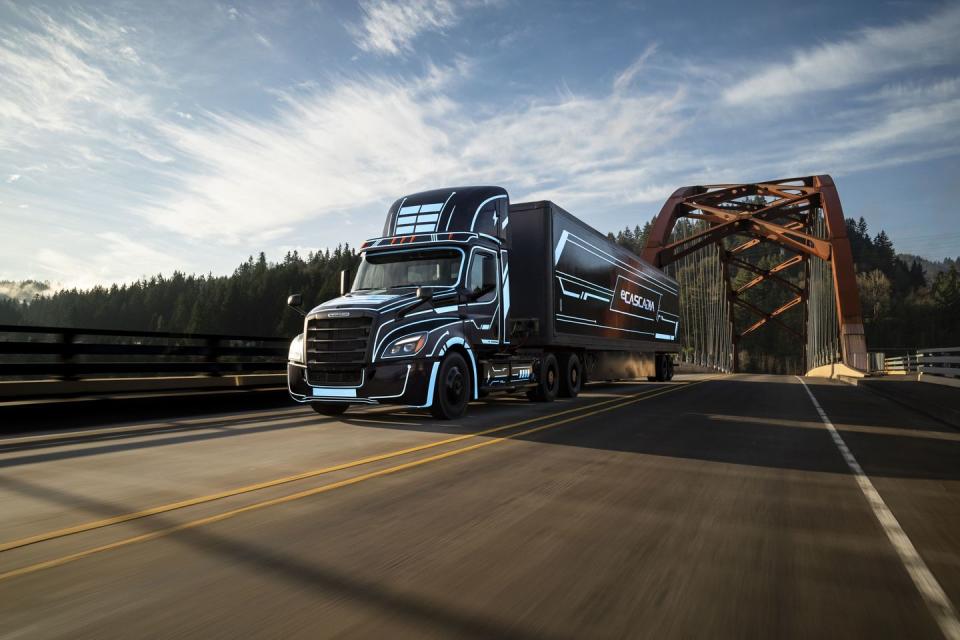
Let’s start with the Freightliner big rig, the eCascadia. It’s based on the diesel-powered Cascadia frame, which Freightliner says is the most successful heavy-duty long-distance truck in North America. Freightliner’s parent company Daimler Trucks North America owns 40 percent of the heavy-duty truck market in North America.
The eCascadia is a Class 8 truck, commonly referred to as a semi-truck, tractor trailer or big rig. It has power ranging from 360 to 525 hp and a GVWR of up to 82,000 pounds. The truck can be configured with single or tandem electric axles, with electric motors taking the space once occupied by differentials. It has a battery capacity of up to 475 kWh (almost five Tesla Model S sedans) and a range of 250 miles. The Class 8 Freightliner eCascadia will go into production in late 2022.
While the diesel-powered Cascadia sells for somewhere in the $139,000 range, electric big rigs like this, depending on how they’re configured, can cost two or three times as much. So fleet buyers have to look at total cost of ownership, or TCO. Over the lifetime of a truck, an electric drivetrain will pay for itself—exactly when depends on how it’s used.
I got to drive an eCascadia for a couple laps in the Dignity Health Sports Park in Los Angeles. It was actually easier to drive than a conventional diesel big rig, since there was not only no shifting required, and the amount of braking necessary was reduced by the presence of regenerative braking, which slowed the truck at an adjustable rate as you lifted off the gas. The drive was quiet, except for some rattling over the uneven surface of the stadium’s parking lot, and the power and torque delivery was smooth. Those truck seats are a little more like separate thrill rides in the way they bounce up and down independently. Only thing missing was a CB.
Freightliner has said that this particular setup would be best suited to local deliveries, particularly hauling containers from the ports of Los Angeles and Long Beach up to the Los Angeles Transportation Center Intermodal Facility, where the containers are loaded onto freight trains. If you did that run three times a day that would be 180 miles, which would be about right for this setup, Freightliner said. Then you park it overnight to recharge. Or park it for lunch while it recharges to 80 percent of battery capacity in 90 minutes.
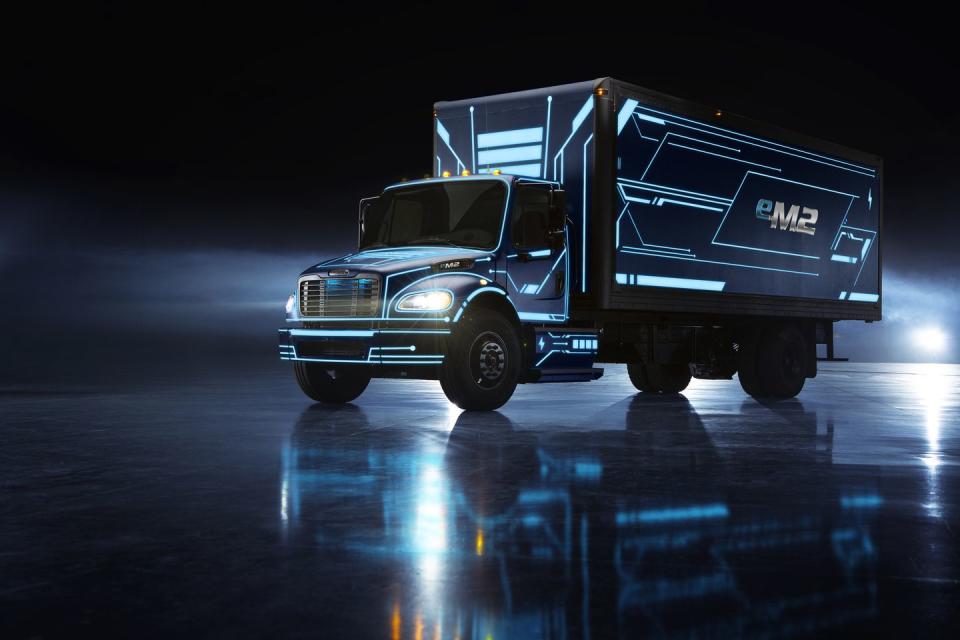
Next, I drove a Class 6-7 truck, the Freightliner eM2. This large boxy rig has a GVWR of between 26,000 and 33,000 pounds and can go up to 230 miles on a charge. Battery capacity is as high as 315 kWh and it can recharge up to 80 percent in 60 minutes. It’s powered by a single electric axle. In the parking lot this one bounced even more than the Class 8 truck, but that was just because the cargo hold was empty. Just as in a pickup truck, the ride evens out with a full load in the bed. Look for this truck to be in production, and for prices to be released, in early 2023.
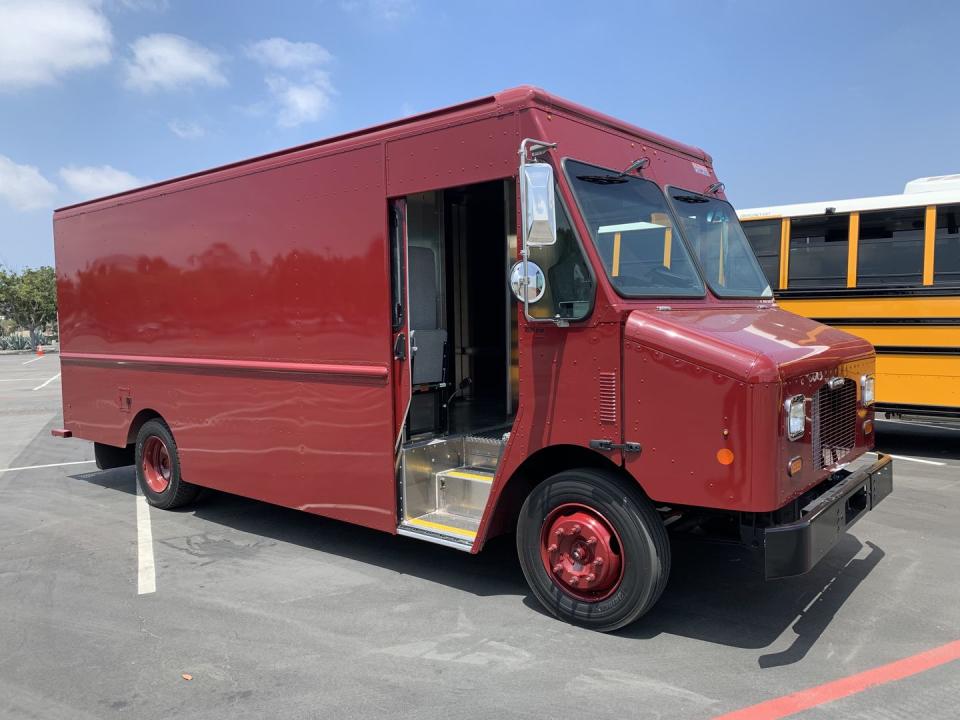
The Walk-In Van, what might also be called a step van, has been offered by Freightliner Custom Chassis since 2010. The one you see here is a new version called the MT50e. It offers 303 peak hp from a 220 kWh battery giving a 125-mile range. This application is perfect for an EV, since all that delivery vans do all day is stop and start (think Amazon—why all Amazon vans aren’t electric is beyond me).
This one was a big aluminum box with plenty of room inside for shelves and various products that need to be delivered all over a city. With 125 miles of range it can more than handle a day’s driving around any big- or medium-sized city. Return on investment on a van like this is about five years or so. It will be in production in late 2021.
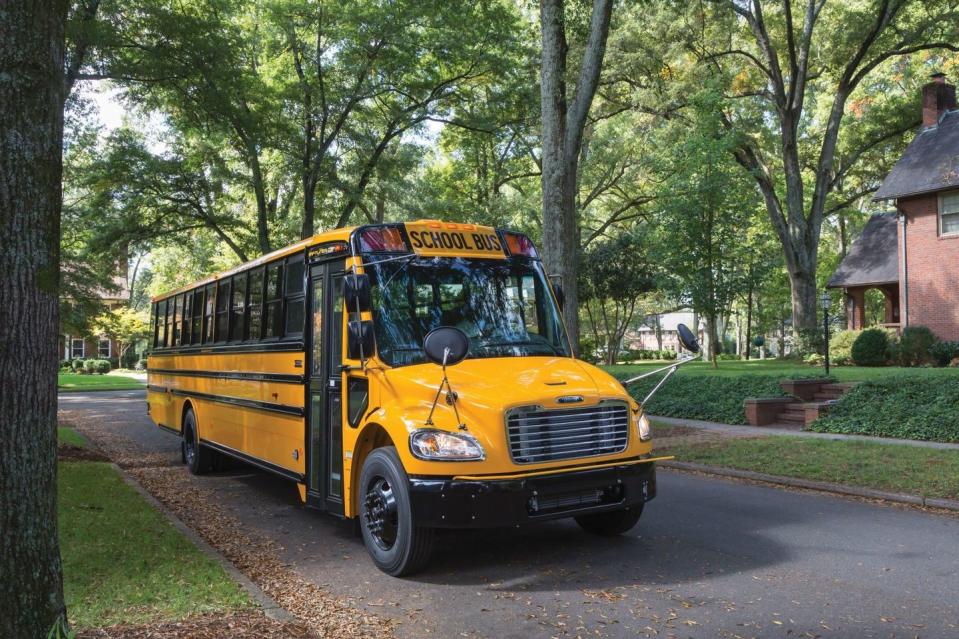

 Yahoo Autos
Yahoo Autos 